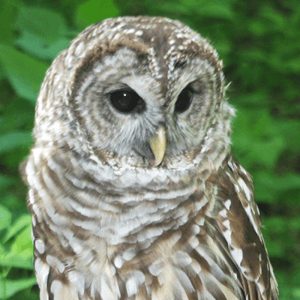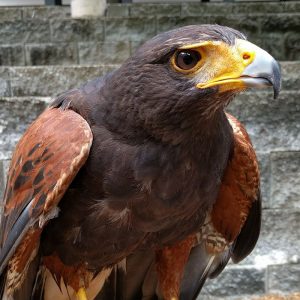Military Macaw – Murdoch
Murdoch came to World Bird Sanctuary at a young age in 2004 to fly at our seasonal zoo shows. However, we learned that even though he is fully capable of flying, Murdoch prefers not to. Since Murdoch does not like flying, we simply do not ask him to. He gets to hangout around people the way he likes best: standing and sitting.
$29.00 – $129.00
Description
HATCH YEAR: 2004
FUN FACTS ABOUT MURDOCH
- Murdoch loves interacting with guests that visit the Nature Center, where he often greets newcomers with a cheery “Hello!” and also bids them farewell with a “bye- bye.” Guests may also hear him say “Hi Murdoch, “pretty bird,” “pretty Murdoch” and a bunch of other random phrases.
- One of his favorite pastimes is to play “Peek-a-Boo,” where he bobs his head down and back up again with guests and naturalists alike.
- As an educational ambassador for his species, Murdoch also travels to overnight programs where he may collect donations by taking them with his beak and placing them in a donation box. He particularly enjoys those programs as he likes to people watch between donation sessions.
- You can also find him collecting donations at our Amazing Animal Encounters during the summer.
SPECIES FACTS
Scientific Name:
- Ara militaris.
Distribution:
- From Mexico as far south as Argentina, but its range is very fragmented and in South America consists of a series of scattered populations along the length of the Andes. There are former range areas in western Mexico where it is now extinct.
Habitat:
- In South America, these macaws prefer wooded mountain foothills with humid forest and canyons, while in Mexico, they use a slightly wider range of habitat types, including semi-arid woodland and pine-oak forest. They do not seem to be restricted to pristine habitat, with reports from Peru and Mexico that they will use shade-grown coffee plantations and other agricultural land.
Diet:
- Seeds, fruits, nuts, berries and other treetop vegetation; beaks well adapted for cracking hard nuts with ease; known to visit clay riverbanks and feed on the clay deposits which are believed to detoxify the poisons found in their diets; possibly ingested for the dietary salt which their normal diet lacks.
Behavior:
- A very noisy bird that lives in large flocks; leaves roosts in large flocks at dawn and head to feeding areas; nest in the tops of trees and in cliff-faces over 600 ft.; these birds are monogamous and remain together for life; female lays 1-2 eggs which only she will incubate for approximately 26 days.
Identification:
- Mostly green in color with the head a slightly paler shade; has a red frontal patch, with a white bare facial area barred with narrow blacklines; flight feathers are blue; red tail bordered with blue; the large strong beak is grey-black; the iris is yellow; appears similar to and maybe easily confused with the larger Great Green Macaw.
Additional information
| Adoption Level | Fan, Friend, Sponsor |
|---|





